#saint catherine museum
Explore tagged Tumblr posts
Text
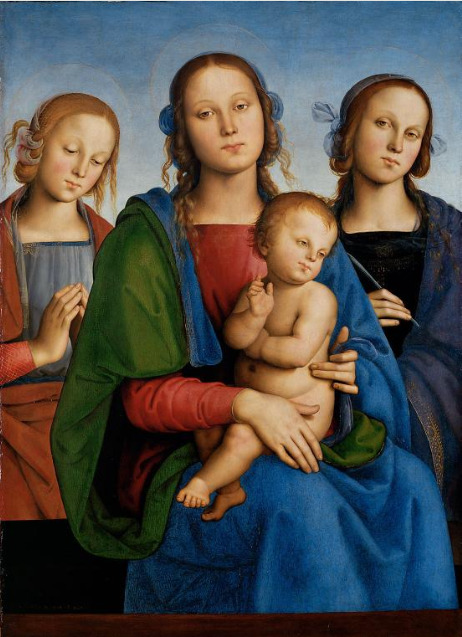
Mary with child, Saint Rose (?) and Catherine (?), Pietro Perugino, 1493-95
#art history#art#italian art#aesthethic#painting#perugino#rinascimento#mary#pietro perugino#jesus#saint rose#saint catherine#kunsthistorisches museum#15th century#catholic aesthetic
59 notes
·
View notes
Text
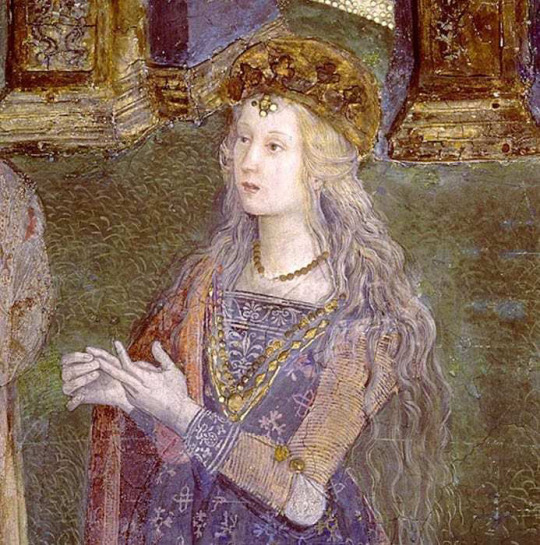
Detail of Lucrezia Borgia as St Catherine, from Disputation of St Catherine of Alexandria
by Pinturicchio
#lucrezia borgia#portrait#renaissance#art#italy#lucrezia#borgia#europe#european#history#pinturicchio#bernardino di betto#pintoricchio#vatican#vatican museums#vatican city#italian#christian#christianity#st catherine of alexandria#st catherine#femme fatale#noblewoman#religion#religious art#sala dei santi#hall of the saints#borgia apartments#apostolic palace#frescoes
78 notes
·
View notes
Text
The Amber Room in Catherine palace, Tsarskoe Selo, Russia
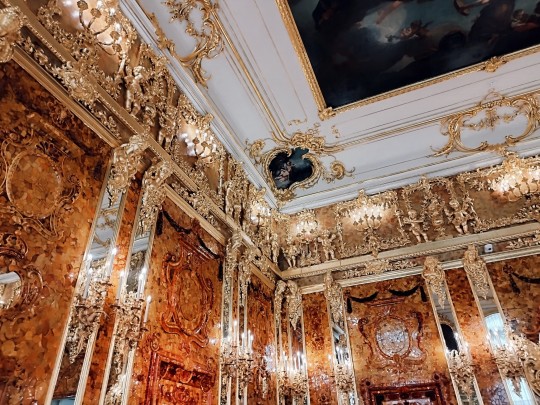
#the romanovs#royalty#romanovs#vintage#retro#beautiful#history#russia#saint petersburg#catherine palace#museum#antique#masterpiece#love#russian royalty#russian empire#aesthetic
58 notes
·
View notes
Text
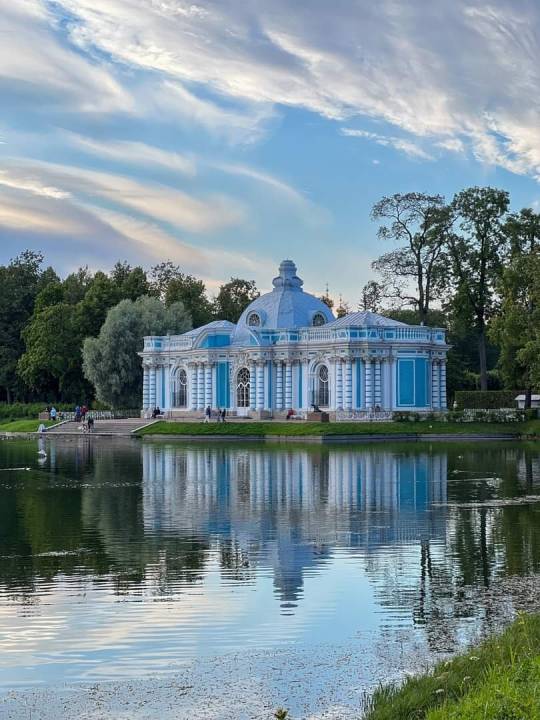
Big Pond and the Grotto Pavilion in Catherine Park, Tsarskoe Selo Museum, Saint Petersbug, RUSSIA
#big pond#gran estanque#grotto#pavilion#pabellon#catherine#catalina#park#parque#tsarskoe selo#museum#museo#saint petersburg#san petersburgo#russia#rusia#europe#europa
136 notes
·
View notes
Text



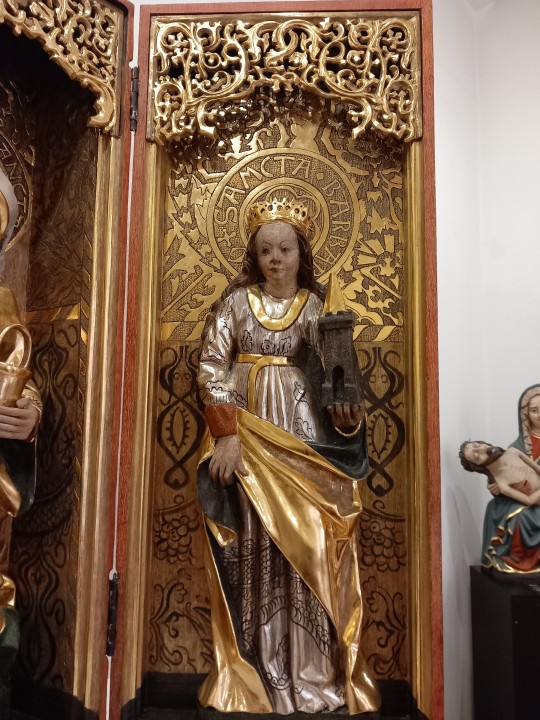
#saints#gothic art#medieval#triptych#christianity#madonna with child#saint barbara#saint catherine#saint anna#saint martha#altar#late middle ages#art history#museum#my pic#gold
21 notes
·
View notes
Text

The Virgin in a Cloud of Angels, with Saints Barbara and Catherine, Paris, France, about 1500
From the Poncher Hours, Master of the Chronique scandaleuse (French, active about 1493 - 1510), illuminator
Getty Museum
49 notes
·
View notes
Text

Thetis Takes Achilles from the Centaur Chiron
Artist: Pompeo Batoni Girolamo (Italian, 1708–1787)
Date: 1768-1770
Medium: Oil on canvas
Collection: Hermitage Museum, Saint Petersburg, Russia
About this painting
This is the only known painting on this subject. The Russian Empress Catherine II commissioned the painting from Batoni and herself selected the theme, probably finding it in Giovanni Boccaccio's De Genealogia Deorum (The Genealogy of the Gods). In the 18th century scenes from the story of Achilles, hero of the Trojan War, were much in fashion. Achilles's mother, the goddess Thetis, gave him over to be brought up by the centaur Chiron. Learning that her son must die in the war against the Trojans she decided to deceive fate and removed the sleeping Achilles from Chiron, fleeing in a shell to the protection of King Lycomedes on the Island of Scyros. Forming the basis of Batoni's strict composition are two arches, the niche in the cave of Chiron with its herm, and the opening in the rocks, beyond which spreads the sea. The nymphs carefully carry the sleeping Achilles to the shell, while nearby, Thetis says farewell to Chiron. The ideal proportions of the figures recall ancient statues. The pure resonant colours of the robes - blue, red, white and pink - are set off against the calm brownish-grey of the cliffs.
#greek mythology#mythological art#greek gods#painting#oil on canvas#pompeo batoni#italian painter#mythological scene#achilles#centaur chiron#island#scyros#cave#sleeping#shell#sea#18th century painting#fine art
22 notes
·
View notes
Note
do you know where the first few of the romanovs resided before all of the palaces were built and if so, are any of them remaining? do we know what they look like?
I'm afraid very little from the earliest days of the Romanov dynasty had survived the ravages of time. By the time of Nicholas II, many early residences had already been either destroyed or replaced by the modern and elegant palaces we see today. Here's a few that survived.
The Cabin of Peter the Great May 1703
Built during the founding of the city of Saint Petersburg, the log cabin was the first St. Petersburg "palace" of Tsar Peter the Great. The small wooden house was constructed in just three days, by soldiers of the Semyonovskiy Regiment.
At that time, the new St. Petersburg was described as "a heap of villages linked together, like some plantation in the West Indies".
The Cabin was boarded up and camouflaged during the Second World War. It was the first St. Petersburg museum to reopen in September 1944, after the end of the Siege of Leningrad.

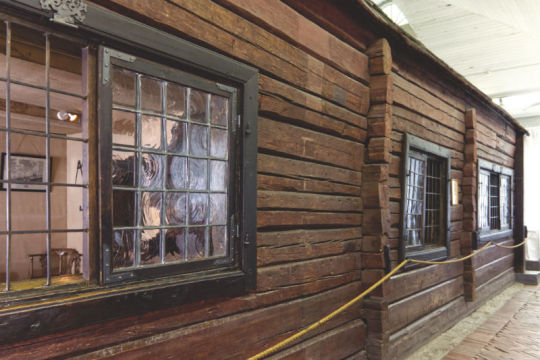
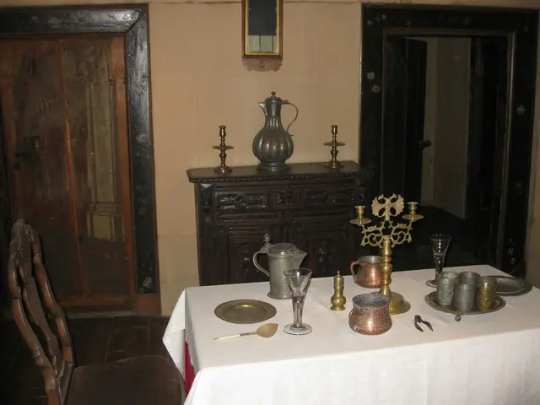
This cabin must have appeared as a huge downgrade after the wooden palace of Tsar Alexei!
The Wooden Palace of Tsar Alexei Romanov 1667
The recreation of an authentic mid-17th century Romanov residence was built recently in 2010. The Palace of Tsar Alexei Mikhailovich, also known as the Wooden Palace of Tsar Alexei, is a large wooden palace in Kolomenskoye, near Moscow, Russia.
The original was built in 1667 without using any fasten materials, nails or hooks. The wooden palace, famed for its fanciful, fairytale roofs, was a summer residence for Russian tsars before St. Petersburg was constructed.
The palace was divided into male and female halves, with the Tsar and Tsarevitches towers and chambers in the male half and the Tsarina's towers in the female half.
The palace's interior featured rich decorations, including carving, painting, gilding, and ceramic tiles, as well as rectangular and round stoves, weathercocks, and windows and porches.



Foreigners referred to this huge maze of intricate corridors and 250 rooms, as 'an Eighth Wonder of the World'. Although basically only a summer palace, it was the favorite residence of Tsar Alexei I.
The future Empress Elizabeth Petrovna was born in the palace in 1709, and Tsar Peter the Great spent part of his youth here.
Upon the departure of the court for the swamps of St. Petersburg, the palace fell into disrepair, so that Catherine the Great refused to make it her Moscow residence. On her orders the wooden palace was demolished in 1768, but thankfully, the detailed plans of the palace had survived.
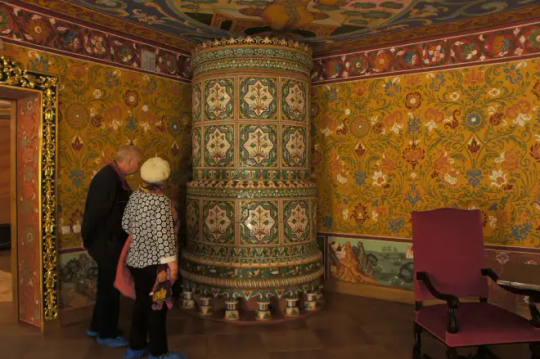
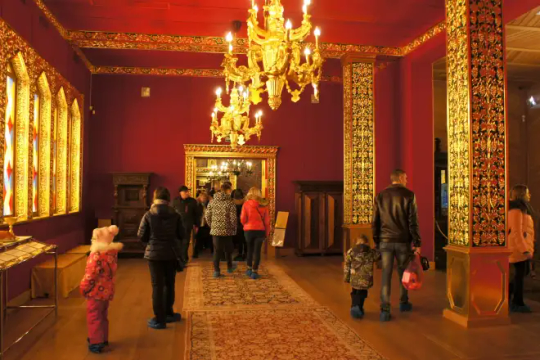
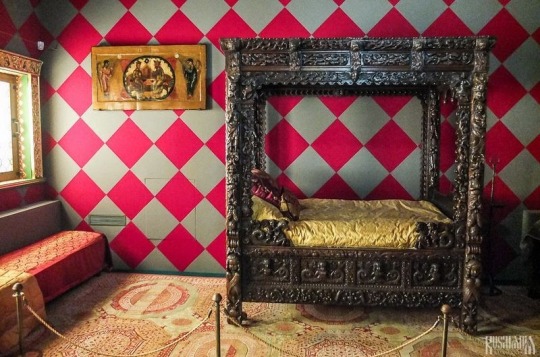



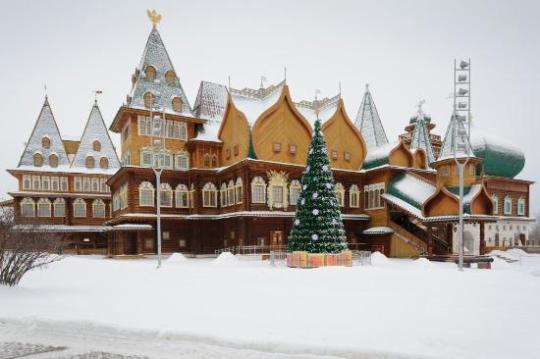
Summer Palace of Peter the Great
1714
One of the earliest imperial residences I can think of that still exists today is the modest Summer Palace of Peter the Great, which is located on an island near the Peter and Paul Fortress, the burial place of the Romanovs.
The palace was built between 1710 and 1714, a few years before the proclamation of the Russian Empire. By the time of Tsar Nicholas II's reign at the end of the 19th century, it became vacant.
During the Second World War, both the Summer Palace and Summer Gardens were badly damaged by a German bombing raid. The building was repaired, however, and the layout remains unchanged from the original.

Above: The palace as depicted in 1809. Below: The residence today.

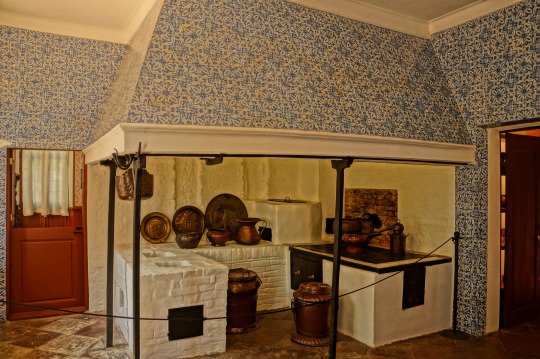

Monplaisir Palace in Peterhof 1714-1716
There is another residence owned by Peter the Great that is still standing today. And that is the Monplaisir Palace in Peterhof.
The following painting depicts the formidable Tsar and his son and heir Tsarevich Alexei Petrovich, who has been accused of preparing to seize power, in the interior of the Monplaisir Palace. Before pronouncing sentence, Peter I gazes into his son's eyes, still hoping to discern signs of remorse.


Above: The Parade Hall of Monplaisir Palace today.



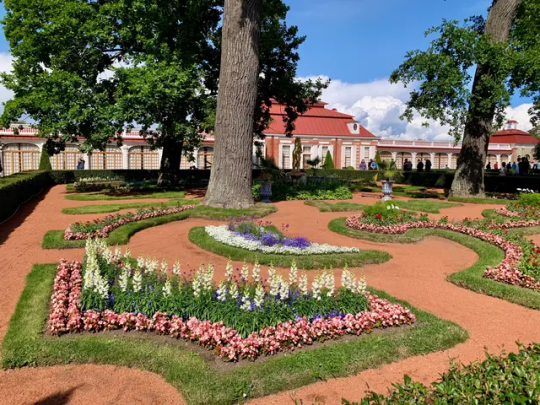
#romanov#romanovs#palace#palaces#history#russian culture#russian history#royal history#imperial russia#moscow#saint petersburg#peterhof#russian imperial family#ask
41 notes
·
View notes
Text

I'm a paper conservator (though I don't post about that often here, so don't follow me expecting this kind of content) and I'll be assisting with a chemistry course on blue pigments and dyes next semester. I'm also trying to help get the chemistry folks the funding to get an infrared camera to examine artwork in my art museum for potential pigment analysis.
If you like looking at illuminated manuscripts, the Fitzwilliam Museum at Cambridge has a gorgeous website called Illuminated: Manuscripts in the Making. It's full of high res images, often with infrared layers that you can examine too, and occasional microscopic images, and TONS of information about each manuscript including history, artistic style, artist's materials, etc. This website is the modern version of an old book of hours, beautiful and the highest quality and no expense spared.


This page (folio 20r) from The Hours of Isabella Stuart is fun for infrared examination. Most of the gorgeous blue was painted in ultramarine, which was one of the most expensive pigments, up there with gold, and it's the reason the Virgin Mary and Jesus are often portrayed wearing blue. But the owner, the duke of Brittany, changed the lady patron at the lower left (who may have been his first wife) and got an artist to paint his new fiancee Isabella Stuart instead, with her patron Saint Catherine behind her, clothed in ultramarine blue. Later he had it repainted again to change her headdress to a duchess's crown, but this time the artist used azurite blue which is slightly cheaper. It almost looks the same in normal light, but under infrared the azurite shows up as dark while ultramarine looks much lighter.
11 notes
·
View notes
Text

"Saint Catherine of Alexandria, Pray for Us!"
📷 Saint Catherine of Alexandria (circa 1475–1525) / The Metropolitan Museum of Art, New York, NY, USA. #CanvaPro #Catholic_Priest #CatholicPriestMedia #SaintoftheDay
16 notes
·
View notes
Text
I came across this painting on tiktok earlier and tracked it down and I can't stop staring. I don't know why it's so captivating, I'm usually not even this into art. I just want to keep staring at it. There's two versions of the painting I could find, one with really vibrant colours and the other tuned down but both are gorgeous.


The painting, "Pallas Athene" is by Rembrandt and one of his pupils from circa 1657. It's gorgeous and I want it in my house immediately. It belongs to the collection of Calouste Gulbenkian Museum in Lisbon. It's an oil painting, the colours are so gorgeous to me. Looking at the painting closer, it radiates with Rembrandt's love of ancient weapons.
The background of the painting is relatively interesting. There's theories that the pose and appearance of the goddess is based off of Rembrandt's son, Titus Van Rijn. If I look at her face closer, I can definitely see the androgyne. Catherine II of Russia, ever the woman of taste, bought it from Paris and later gave it to her lover before being transferred to a museum and then bought through an art dealer by the current owner.
There's debate on the theme, date and origin of the artwork. Although nowadays, it's pretty much agreed it's by Rembrandt and one of his students. I think that might by part of why I like it. The mix of student and master levels of art into one. It's so. Gods. I can't describe it. There's two main theories I could find after my surface level search. One is that it was made to celebrate Saint Luke. The other that it was part of a trio of paintings, however looking at them (Juno and Venus), I don't think that's the case. The style is too different. I won't offer an art analysis since I'm not good at those things but there are some facisnating ones. They all definitely agree on the androgyne of the figure, which is further proven by another debated aspect of the painting: the name. Not everybody agrees that it is Athena in the painting, some think it is Alexander The Great or Titus himself. Alternative names for the painting include "Portrait of Alexander in the Armor of Pallas", "Mars", "Portrait of Titus" and "Young Warrior".
I might rant about this painting more but gods, I think it's one of my new favourites.
Sources:
9 notes
·
View notes
Text

The 1997 Anastasia movie, while most likely being most people’s introduction to the Romanov Family and their history, was incredibly inaccurate.
Here are some of those inaccuracies
In the first opening moments, of the film we see the Dowager Empress Marie Feodorovna boarding the carriage to go to the ball. The footman greets her as Your Highness. In fact, the Dowager Empress addressed as Your Imperial Highness (there was a huge difference as Princess and Princesses were only entitled Your Highness.)
The Romanov Tercentennial was in fact 1913, not 1916.
In 1916, as the movie claims, Anastasia is 8. In fact, Anastasia was born in 1901, making her actually 15 at the time of the ball.
When we see Anastasia greet her grandmother at the ball, Marie Feodorovna wears a wedding ring on her left hand. In Russian Orthodoxy, the wedding band is worn on the right hand.
When the ‘evil’ Rasputin party-crashes the ball, Nicholas tells him he is a traitor. In the time Rasputin spent with the family, there was never any evidence that he betrayed them. He offered them his support, albeit for questionable reasons, but was only sent away for a short time by the Tsar under pressure from his ministers.
The raid of the Winter Palace occurred well into 1917, not 1916 as portrayed in the film. By this time, Nicholas had already abdicated (March of 1917) and they were imprisoned first at the Alexander Palace, then in the Governor’s mansion in Tobolsk, before being moved to the Ipatiev House in 1918, where they were ultimately murdered. The murder of the imperial family did not happen until two years after the ball in the film.
When Anastasia runs back to her room to retrieve her music box, we see the room to be rather “royal-looking” with a single large bed in the corner. Anastasia shared a room with her older sister Marie for all of their childhood, and their beds were in fact camp-beds; hard and not as luxurious as other royalty’s of the time.
Ten Years Later, 1926, Anya leaves the orphanage for a job at the fish market. When Anastasia reaches the fork in the road, the sign says Saint Petersburg. During the Great War, St. Petersburg was renamed Petrograd, a less German-sounding name. After communist leader Vladimir Lenin died in 1924, it became Leningrad, when it did not become Saint Petersburg again until 1991. Throughout the film this inaccuracy is repeated, most significantly in the song Rumor in Saint Petersburg. One would think even the peasants would be accustomed to a new name of their city after 10-15 years.
When Anastasia reaches the train station, the station guard wears the red cap with the Soviet crest. This crest wasn’t used in fact until the 1930s. It was only 1926.
A number of times, the peasants and Dmitri call her The Princess. In Russia, this would have been a great offense to her title, as Anastasia had always been, a Grand Duchess. The title Princess ranks significantly under Grand Duchess
Anya, is in fact a Russian nickname for Anna, not Anastasia. Anya was the name of her mother’s lady-in-waiting and close friend Anna Vyrubova. Anastasia’s nickname was Nastya, Nastia or shvibzik “imp”.
In 1926, the Catherine Palace was being used as a museum and its park area was open to the public, not quite as run down as in the film.
It wasn’t also the Imperial Family’s home, as suggested; they preferred the comfort and privacy of the Alexander Palace at Tsarskoe Selo, a little while outside the city.
When Olga, Tatiana and Marie come down to dance with their sister during the song, they all look to be around the same height. In truth, Anastasia was much shorter than her sisters. Tatiana was the tallest in the family, standing at around 5’9
The same mistake was made with Nicholas. When he and Alexandra come out of the portrait, he looks to be much taller than Alix; he, like his daughter, was actually rather short, only about 5’6, and stood around the same height as his wife.
When Bartok watches Vlad, Anastasia and Dmitri leave the ball room, he says All the Romanovs are dead. This simply wasn’t true. In 1919, around 30 Romanovs managed to escape via various methods, including the Dowager Empress Marie Feodorovna.
On the boat to France, Rasputin attempts to force Anya to jump off the side of the ship. She dreams she sees her father, sisters and brother playing in water. Nicholas calls her “Sunshine”, which was actually the nickname of her little brother, Alexei.
In this same dream, Alexei jumps from the top of the cliff down into the water. It was well-known that Alexei had a severe type 2 case of hemophilia, and there was no way Nicholas nor any of the sisters would have allowed him to make such a dangerous leap.
When the gang are journeying to Paris, they hope to meet the Dowager Empress. In 1926, Marie was actually living in Denmark, after the death of her beloved sister, Queen Alexandra of England the year before.
When Anastasia meets Sophie, she is asked how she likes her tea. Anastasia tells her she doesn’t like tea. But there have been many anecdotes of the real Anastasia drinking tea in the mornings and afternoons with her sisters and parents. (This of course may have changed as she aged).
When Dimitri refers to Anya and the Dowager Empress as ‘your grace’ this title is also incorrect. “Your Grace” was commonly used only amongst non-royal dukes and duchesses, and archbishops of the United kingdom.
When Vladimir announces ‘we have found the heir to the Russian throne’, this is completely innacurate. Even as the closest surviving member to the last Tsar, Anastasia would, sadly, have no right to the throne. There were around 30 dynastic members of the family surviving in 1926, and many available males. In Imperial Russia, the line of succession was strictly male-primogeniture; the eldest son would inherit the throne. In 1926, by law, this male would be the Grand Duke Cyril Vladimirovich.
The Dowager Empress could not have possibly had the means to offer a 10 million ruble reward for the return of her granddaughter. The Romanov fortune had all but disappeared and she largely relied on the charity of the English and Danish Royal Family.
The biggest inaccuracy, however, was that Anastasia survived. She, along with the rest of her family, were murdered by the Bolsheviks in 1918

#russian history#tsarist russia#anastasia romanov#anastasia 1997#film history#historical inaccuracies
25 notes
·
View notes
Text

Smolny Girls
Artist: Dmitry Levitzky (Russian, 1735–1822)
Title: Portrait of Ekaterina Khruschova and Ekaterina Khovanskaya
Date: 1773
Medium: Oil on Canvas
Collection: Russian Museum, Saint Petersburg, Russia
Description
Dmitry Levitsky’s Smolny Girls was done for the Imperial Educational Society for Noble Girls (Smolny Institute). Founded at the initiative of Ivan Betskoi by Catherine the Great in 1764, the institute was housed at the Smolny Novodevichy Convent of the Resurrection in St Petersburg. Ivan Betskoi commissioned Levitsky to paint the portraits for the Smolny Institute. Ekaterina Khruschova (left) and Ekaterina Khovanskaya (right) are depicted performing a pastoral scene at the Smolny Institute.
#portrait#pastoral#girls#dmitry levitzky#russian painter#landscape#smolny institute#russian culture#european#russian artist#18th century painting#costume#hat#outdoors
8 notes
·
View notes
Text

Jusepe de Ribera (Spanish, 1591-1652) The Holy Family with Saints Anne and Catherine of Alexandria, 1648 Metropolitan Museum of Art
#jusepe de ribera#art#spanish art#spanish#spain#classical art#fine art#european art#europe#european#oil painting#fine arts#mediterranean#europa#catherine of alexandria#the Holy Family#western civilization#1500s#1600s#hispanic
56 notes
·
View notes
Photo

1520s Domenico Puligo - Portrait of a Lady as Saint Catherine of Alexandria
(National Museum of Western Art, Tokyo)
148 notes
·
View notes
Text
Random saints by Sittow or Catherine of Aragon's parents?

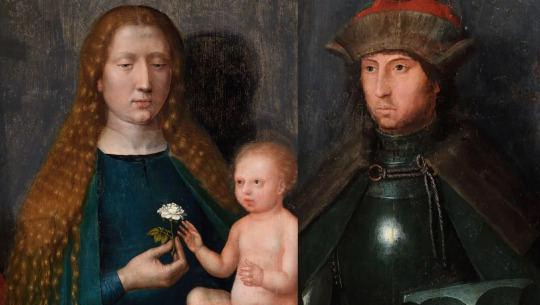
Read further if you wish to know what my theory is.
I first found this photo with mention it is by Sittow and at first I thought it is another portrait of Catherine. But quickly I realised this woman looks older and the features are not exactly the same.
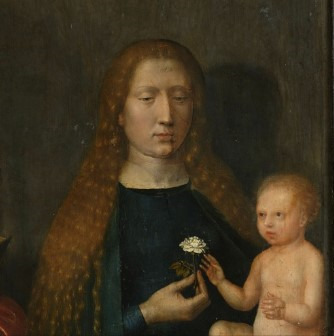
The nose is much narrower. And I started to wonder...we know that Sittow painted at least one portrait of Queen Isabella I of Castile.
And she had such nose. I could exclude possibility some of Catherine's sisters looked like this too, but women in that family tended to be very young-looking for really long.
So the age of sitter already is suggesting that it could be based upon Isabella towards end of her life. And it is also odd for depiction of Virgin Mary to depict woman who is not young...it is point in Isabella's favour.
While many claim Sittow painted Isabella in 1485, he was only born in 1468/1469 and didn't even become indipended master until at least 1488. He is first recorded working in Toledo in 1492. So he'd always be only able to depict Isabella over age of 40. And tbh, if this is her..then she looks great for somebody over 40!
But where is this image? It took me while to track down.
It's detail from wings of theThe Passion Altarpiece (Tallinn), its middle part is from c.1515-1520(with some 17th century additions) by different artist.

But I am not so sure how accurate is the dating of the outer wings by Sittow(1518-1525) which are in very different style, and might have originally belong to different altar middle.

If it is indeed 1518-1525 dating, then imo they are posthumous depictions based upon earlier sketches done from life. Sittow reusing those old sketches, using them as inspiration for his later work.
Link to photos only. Left pannel: https://artsandculture.google.com/asset/the-passion-altarpiece-outer-wing-with-the-virgin-mary-and-apostle-james-the-greater-paintings-of-the-outer-side-of-the-wings-by-michel-sittow-and-his-workshop/BwFnRG1v6gRqmQ
Right pannel: https://arthive.com/artists/75951~Michel_Sittow/works/526786~Saint_Adrian_and_Saint_Anthony
As to where they are located?
-Niguliste Museum(housed in former St. Nicholas' Church), which is part of Art Museum of Estonia(which combines collections from 3 other buildings+ this church). Hence in Tallin, Estonia but be aware there is over 3 km distance in between the church and other buildings.
But if anybody could go there and get us some pictures it'd be great (if it is allowed). Currently Niguliste Museum has exhibition about Sittow:

But back to the pannels. The left one depicts Madonna(Virgin Mary holding baby Jesus) and St. James the Great(apostle and patron saint of Spain:
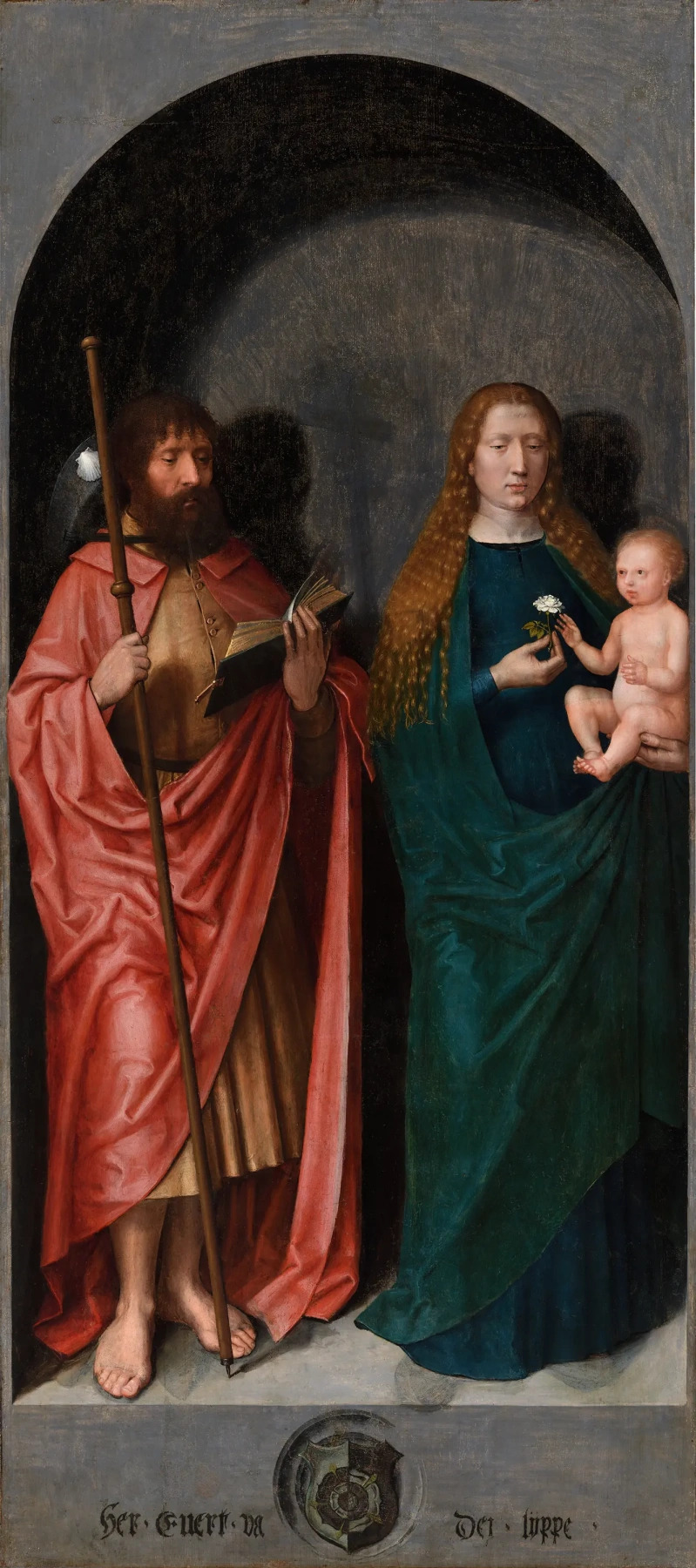
And please note that Tudor rose is combination of red and white rose and not always it was depicted as inner rose white, outer red. Sometimes they were halfed, with inner rose sometiems also switched.

Of course it could be some foreign coat of arms or later alteration.
Right pannel:

Here the coat of arms looks much newer and is probably altered(and if pomegranate turned out to be beneath it, I'd just die...)
The right pannel is depicting two male saints. On right is St Anthony the Great...was father of monasticism(of monastic life)...thus very important saint in christianity...
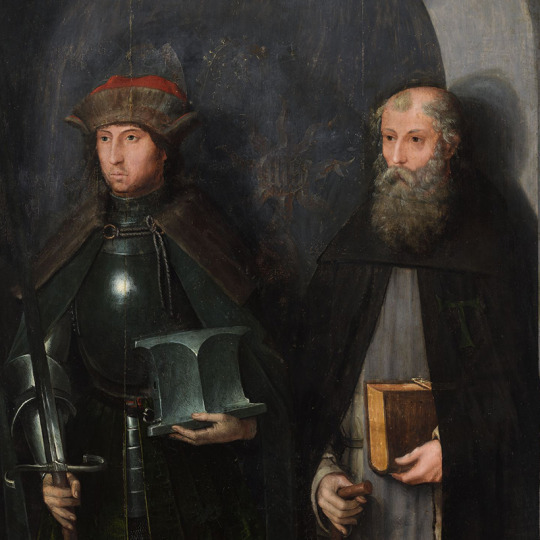
and on left St. Adrian of Nicomedia(2nd most popular military saint after St. George), and imo that's probably King Ferdinand II of Aragon:

It's not great likeness(brows not arched enough, looks bit slimmer, alla of nose not as defined), but overall it's enough of resemblence to not be able to exclude the possibility.
But if this is indeed done years after Sittow was in Spain...and he is reusing his old sketches of catholic monarchs to create this new religious scene(perhaps initially intended for them too, but never made into finished work before), then it is also possible that sketch done in pencil has partially rubbed off...and thus the differences in face of this male.
I think that if this was done while in Spain, such big differences are not very likely to occur. Not that pencil could not rub off, but I think Sittow would have noticed and cared about getting absolutely righ(to please his patrons) and thus would have corrected it.
Ehm, this kitty is supposed to be a lion:
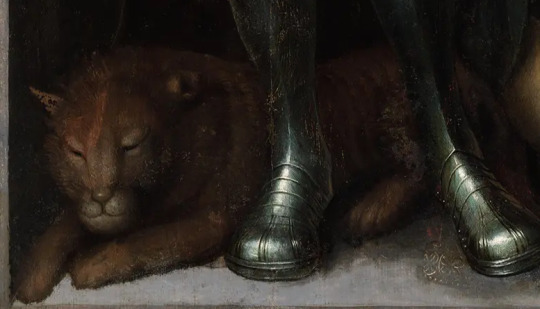
But you must be wondering, if Isabella indeed had this most vivid golden hair colour I always go on and on about, why does she have red hair here?
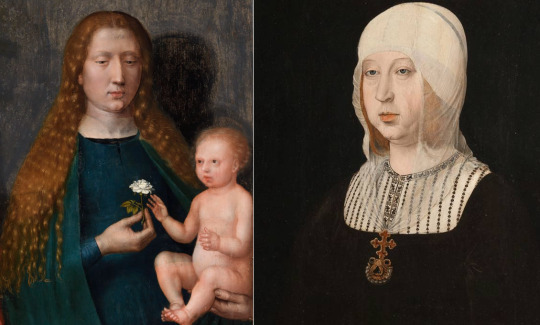
Several options to pick from: Pigments going wrong, Isabella's hair possibly turning to more reddish hues towards end of her life, or simply discoloured pinkish varnish which was very oddly applied...and on baby's skin you can see where somebody applied only one layer and where they went with brush for 2nd time.
If entire pannel has this varnish on, then it'd affect the hair, turning it more red. Why would such varnish not be removed? Sometimes money is tight and museums have multiple paintings to care for and those paintings in fairly good condition have to wait longer.
And sometimes it is not possible to remove discoloured varnish without harming the painting beneath.
Also worth of nothing is that Virgin Mary's dress is typically not teal, but vividly blue, the very best most expensive most vivid blue pigments were very often reserved for depicting the Virgin Mary:

Sometimes due to budget cost cheaper substitues were used, and those tend to fade.
Hence imo the colours originally might have been intended to be more like this(yes, I photoshopped it):

(I didn't change damn thing about male figure, just brightened it. But tbh I played with the woman's dress, skin and hair for while.)
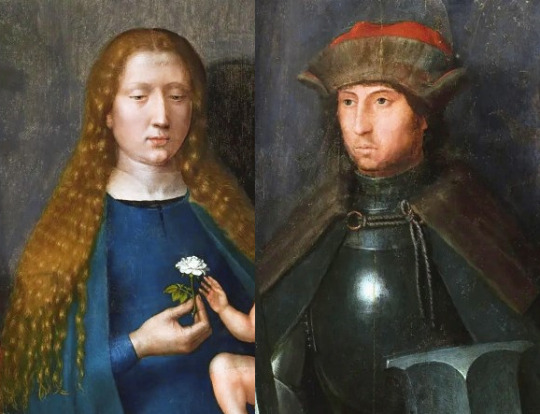
I mean if it looked like this now, fans of catholic monarchs would probably be all over it already.
But people overlook these dark slightly pinkish images located all the way in Estonia, even though it is atributed to Sittow himself!
(I don't mean people in Estonia, I mean people who search for Isabella's lost portrait by Sittow and stubbornly stuck to their favourite which is not even by Sittow!)

I honestly thought that people searching for lost portrait of Isabella by Sittow would have by now checked all his work, to see if perhaps she is there somewhere! Just doesn't look teen or young adult.
So I want you to be aware, if you're on quest of finding Isabella by Sittow's in that portrait with emerald necklace that this is imo the face you're looking for :
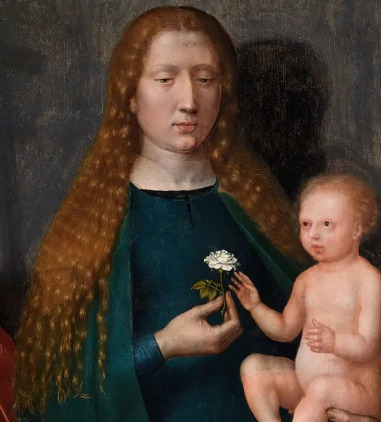
Possibly with hair bit more golden and skin more fair:
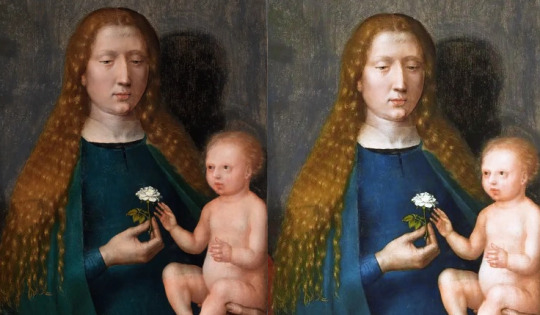
And it doesn't matter she doesn't look 20! She is still very beautiful.
Hence imo, these are Catherine of Aragon's parents, depicted in disguise of saints:

But I think they were likely painted years after Sittow left Spain, and his old sketches of them have been reused to create these pannels. I hope the experts will one day look more into this possibility.
I hope you've enjoyed this, and tell me what you think. Am I onto something or am I chasing shadows?

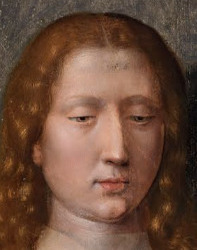
#historical portraits#isabella of castile#ferdinand of aragon#Isabella I of Castile#Ferdinand II of Aragon#sittow
77 notes
·
View notes